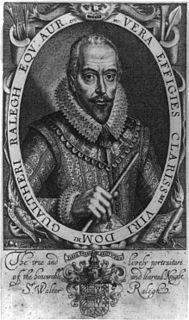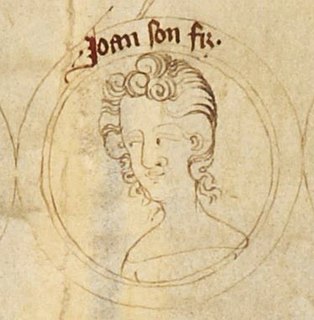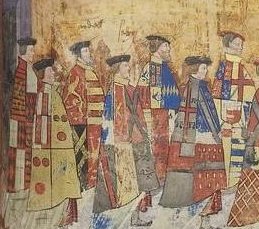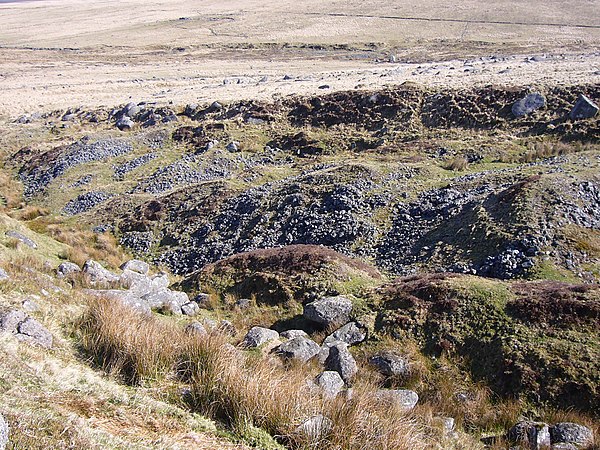
Duke of Cornwall is a title in the Peerage of England, traditionally held by the eldest son of the reigning British monarch, previously the English monarch. The Duchy of Cornwall was the first duchy created in England and was established by a royal charter in 1337. The present duke is the Prince of Wales, the eldest son of Queen Elizabeth II. His current wife, Camilla, is the current Duchess of Cornwall.

Duke of Rothesay is a dynastic title of the heir apparent to the British throne, currently Prince Charles. It was a title of the heir apparent to the throne of the Kingdom of Scotland before 1707, of the Kingdom of Great Britain from 1707 to 1801, and now of the United Kingdom of Great Britain and Northern Ireland. It is the title mandated for use by the heir apparent when in Scotland, in preference to the titles Duke of Cornwall and Prince of Wales, which are used in the rest of the United Kingdom and overseas. The Duke of Rothesay also holds other Scottish titles, including those of Earl of Carrick, Baron of Renfrew, Lord of the Isles, and Prince and Great Steward of Scotland. The title is named after Rothesay on the Isle of Bute, Argyll and Bute, but is not associated with any legal entity or landed property, unlike the Duchy of Cornwall.

Earl of Lincoln is a title that has been created eight times in the Peerage of England, most recently in 1534. The title was borne by the Dukes of Newcastle-under-Lyne from 1768 to 1988, until the dukedom became extinct.
The Duchy of Cornwall is one of two royal duchies in England, the other being the Duchy of Lancaster. The eldest son of the reigning British monarch inherits possession of the duchy and title of Duke of Cornwall at birth or when his parent succeeds to the throne, but may not sell assets for personal benefit and has limited rights and income as a minor.

In England, Wales and Ireland a county palatine or palatinate was an area ruled by a hereditary nobleman enjoying special authority and autonomy from the rest of a kingdom or empire. The name derives from the Latin adjective palātīnus, "relating to the palace", from the noun palātium, "palace". It thus implies the exercise of a quasi-royal prerogative within a county, that is to say a jurisdiction ruled by an earl, the English equivalent of a count. A duchy palatine is similar but is ruled over by a duke, a nobleman of higher precedence than an earl or count.

The stannary law is the body of English law that governs tin mining in Devon and Cornwall; although no longer of much practical relevance, the stannary law remains part of the law of the United Kingdom and is arguably the oldest law incorporated into the English legal system.
The title of Earl of Cornwall was created several times in the Peerage of England before 1337, when it was superseded by the title Duke of Cornwall, which became attached to heirs-apparent to the throne.

The now-extinct title of Earl of Richmond was created many times in the Peerage of England. The earldom of Richmond was initially held by various Breton nobles associated with the Ducal crown of Brittany; sometimes the holder was the Breton Duke himself, including one member of the cadet branch of the French Capetian dynasty. The historical ties between the Ducal crown of Brittany and this English Earldom were maintained ceremonially by the Breton dukes even after England ceased to recognize the Breton Dukes as Earls of England and those dukes rendered homage to the King of France, rather than the English crown. It was then held either by members of the English royal families of Plantagenet and Tudor, or English nobles closely associated with the English crown. It was eventually merged into the English crown during the reign of Henry VII and has been recreated as a Dukedom.

Cornwall is an administrative county of England.
The word stannary is historically applied to:
The Cornish Stannary Parliament was chartered in 1201, by King John. In spite of the name the Parliament was not a national assembly. The charter granted special rights to "tinners" – those involved in mining tin, and exempted them from taxes and dues while they were working in the tin industry. Tinners were also protected from being called up to provide labour to local lords of the manor – while they were working in the Tin industry. The Stannary Parliament's authority was confined to matters related to the tin industry.

The House of Plantagenet was a royal house which originated from the lands of Anjou in France. The name Plantagenet is used by modern historians to identify four distinct royal houses: the Angevins, who were also counts of Anjou; the main body of the Plantagenets following the loss of Anjou; and the Plantagenets' two cadet branches, the houses of Lancaster and York. The family held the English throne from 1154, with the accession of Henry II, until 1485, when Richard III died in battle.

The Lord Warden of the Stannaries used to exercise judicial and military functions in Cornwall, England, in the United Kingdom, and is still the official who, upon the commission of the monarch or Duke of Cornwall for the time being, has the function of calling a stannary parliament of tinners. The last stannary parliament convened by a Lord Warden of the Stannaries sat in 1753.

John of Eltham, 1st Earl of Cornwall was the second son of Edward II of England and Isabella of France. He was heir presumptive to the English throne until the birth of his nephew Edward, the Black Prince.
The Tin Duties Act 1838 is an Act of the Parliament of the United Kingdom which abolished the tin coinage taxation system of the tin mines in Devon and Cornwall, and authorized instead an annual payment to the Duke of Cornwall to compensate for this loss of revenue. The Act also compensated the officers who collected the tax. Until that time Cornwall paid 4 shillings per hundredweight of coined tin, Devon 1 shilling 6 1⁄2d.

Lydford Castle is a medieval castle in the town of Lydford, Devon, England. The first castle in Lydford, sometimes termed the Norman fort, was a small ringwork built in a corner of the Anglo-Saxon fortified burh in the years after the Norman conquest of England. It was intended to help control Devon following the widespread revolt against Norman rule in 1068. The Norman fort had been abandoned by the middle of the 12th century.

Henry Courtenay, 1st Marquess of Exeter, 2nd Earl of Devon, KG, PC, feudal baron of Okehampton, feudal baron of Plympton, of Tiverton Castle, Okehampton Castle and Colcombe Castle all in Devon, was a grandson of King Edward IV, nephew of the queen consort, Elizabeth of York and a first cousin of King Henry VIII. Henry Courtenay was a close friend of Henry VIII's, having "been brought up of a child with his grace in his chamber."
The Revived Cornish Stannary Parliament, is a pressure group which claimed to be a revival of the historic Cornish Stannary Parliament last held in 1753. It was established in 1974 and campaigned, up until 2008, against the government of the United Kingdom's position on the constitutional status of Cornwall.

The Stannary Palace, also known as the Duchy Palace, circa 1265–1300, was a complex of buildings constructed by the Earls of Cornwall as the centre of their administration. The surviving exchequer hall is reputed to be the oldest non-ecclesiastical building in Cornwall. The much larger great hall, of which large parts remain, was built as a replica of Westminster Hall. Its original function was as a court and place of taxation dealing with the Cornish tin industry. The Earls of Cornwall and later, after 1337, the Dukes of Cornwall had their residence at Restormel Castle so the original name would have been the Stannary Hall or the Great Hall of Lostwithiel. After 1337 it was sometimes referred to as the Duchy Palace.
The Stannary Convocation of Devon, also known as the Great Parliament of the Tinners or as the Devon Stannary Parliament, was an assembly in the United Kingdom with the power to amend and expand the stannary law of Devon. Initially assembled in the Middle Ages by the Lord Warden of the Stannaries, the Stannary Convocation developed out of the predecessor to the judicial Courts of the Vice-Warden of the Stannaries but was established as an institution in its own right by the sixteenth century, with the power to both proclaim the existing customs as English law and to legislate regarding the laws by which tinners, who were exempt from the jurisdiction of the ordinary English courts until 1896, conducted their business.













